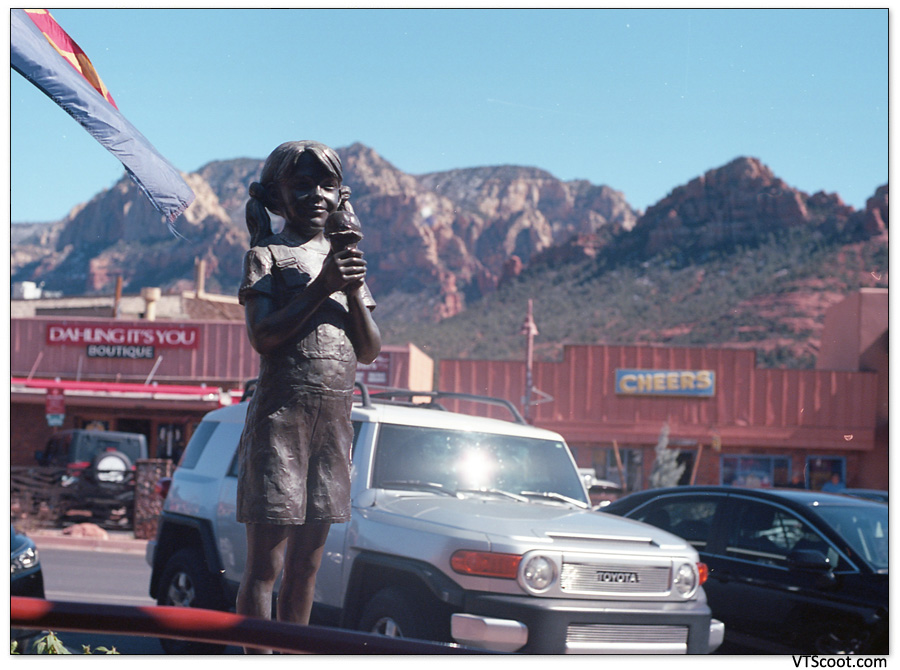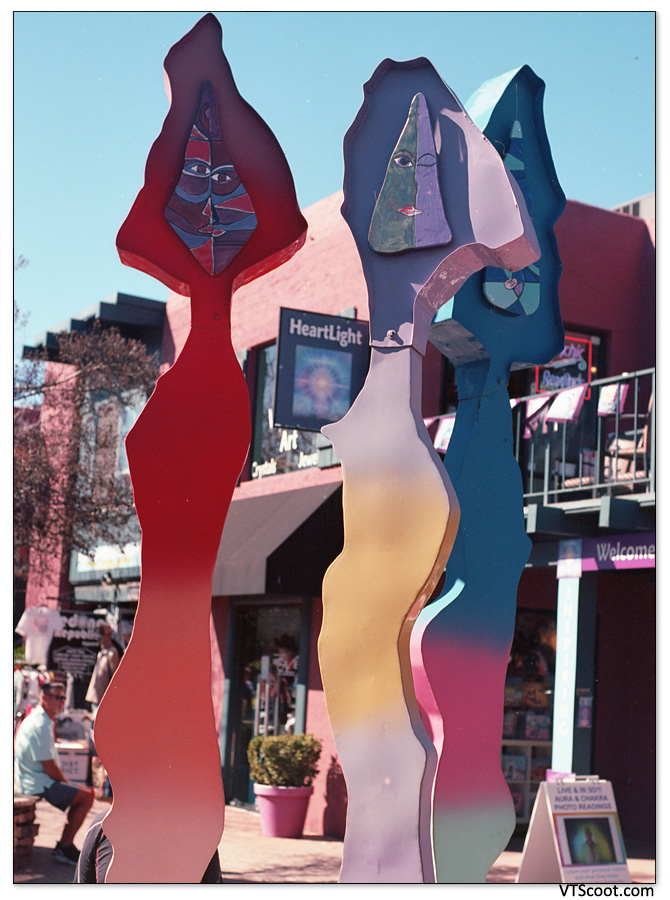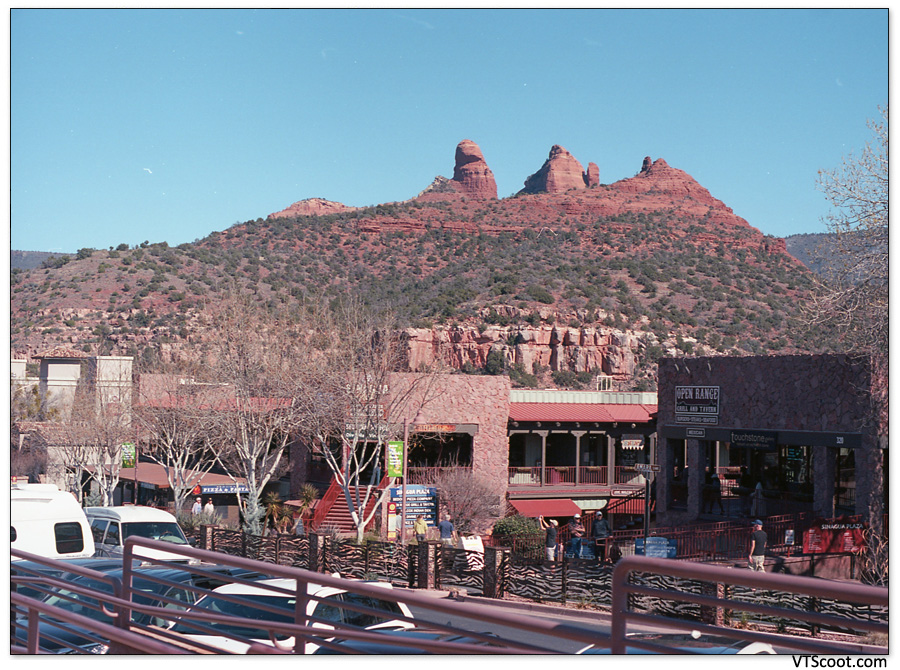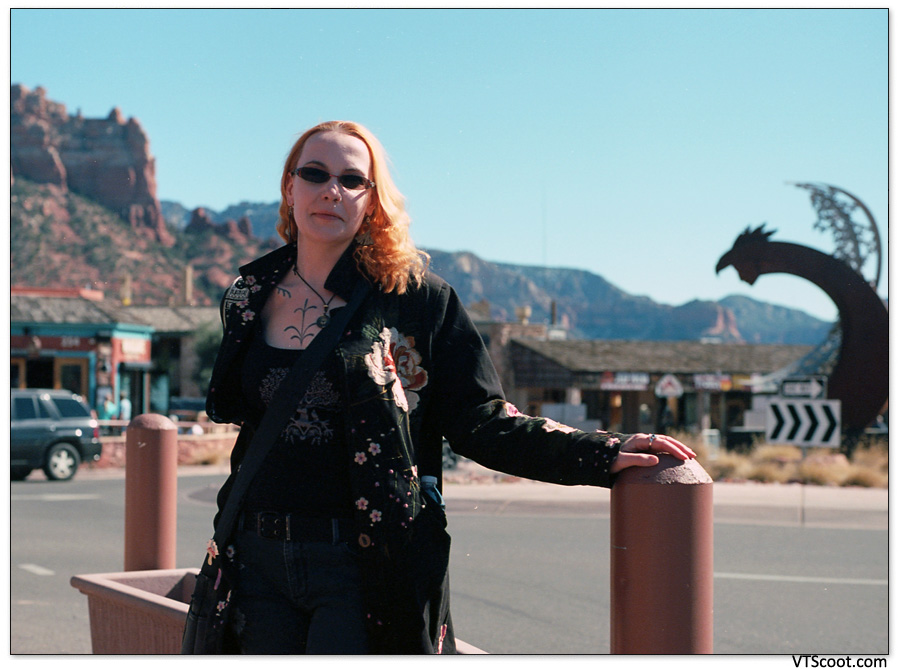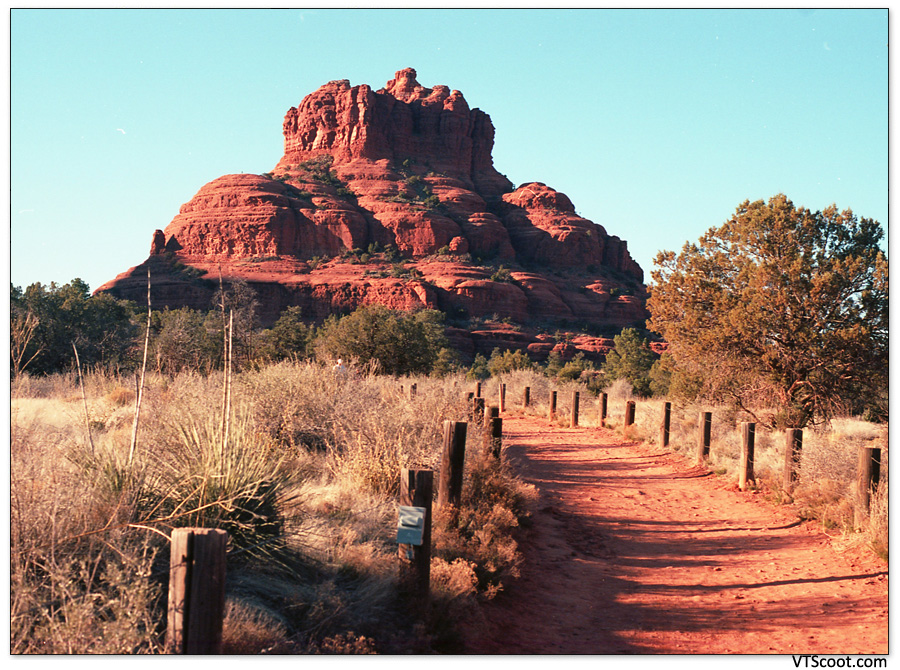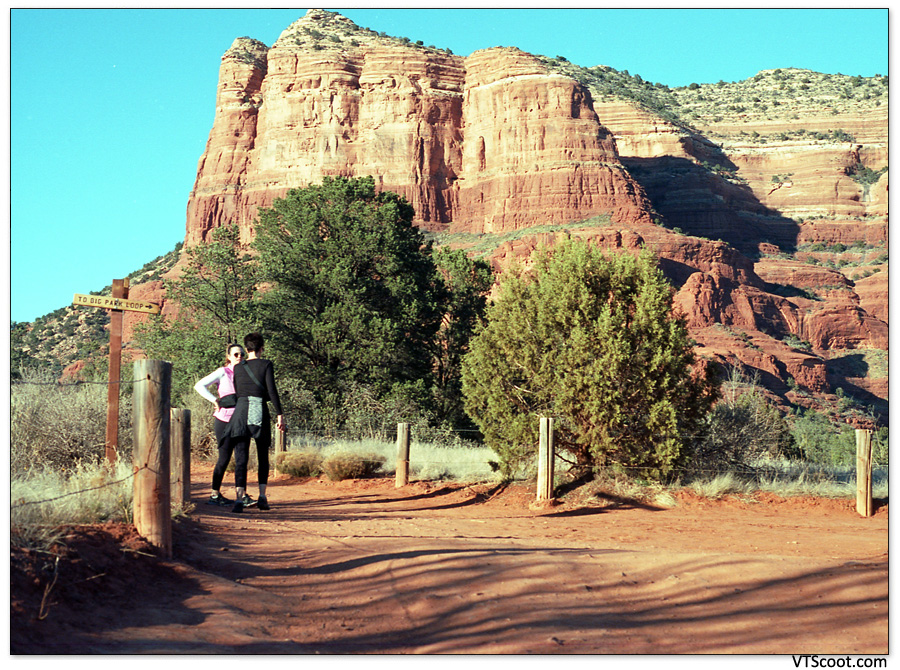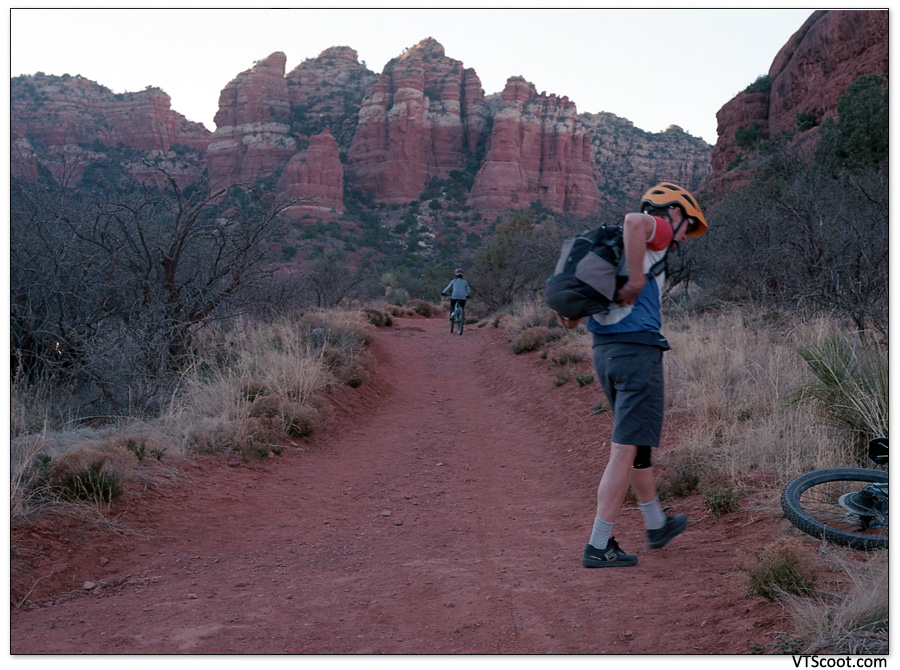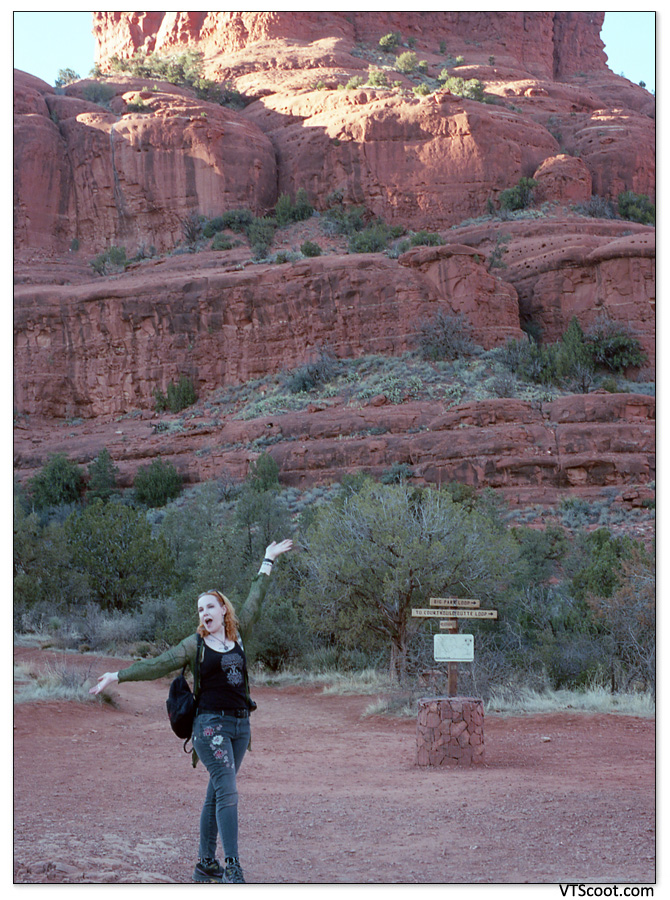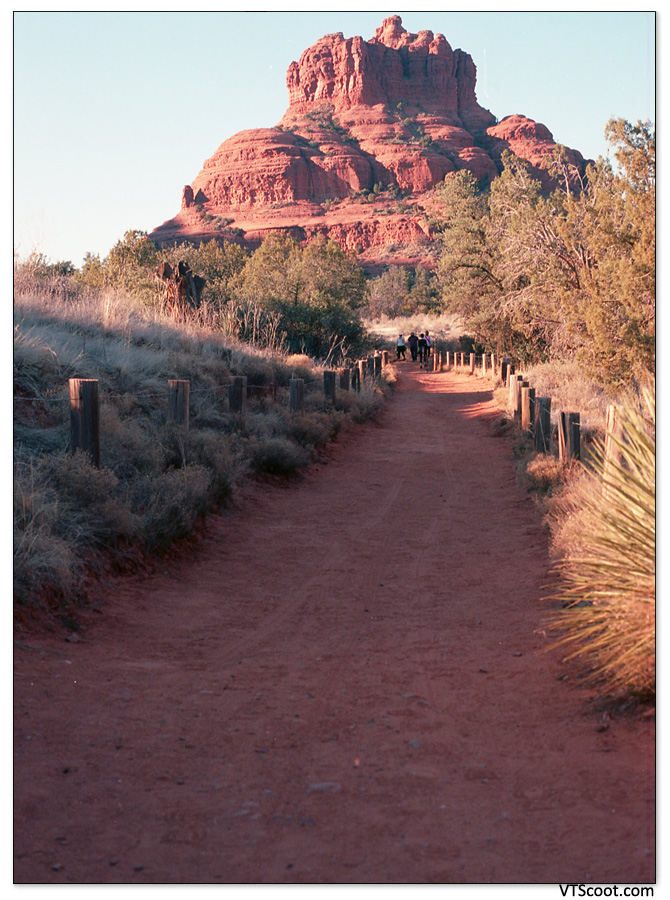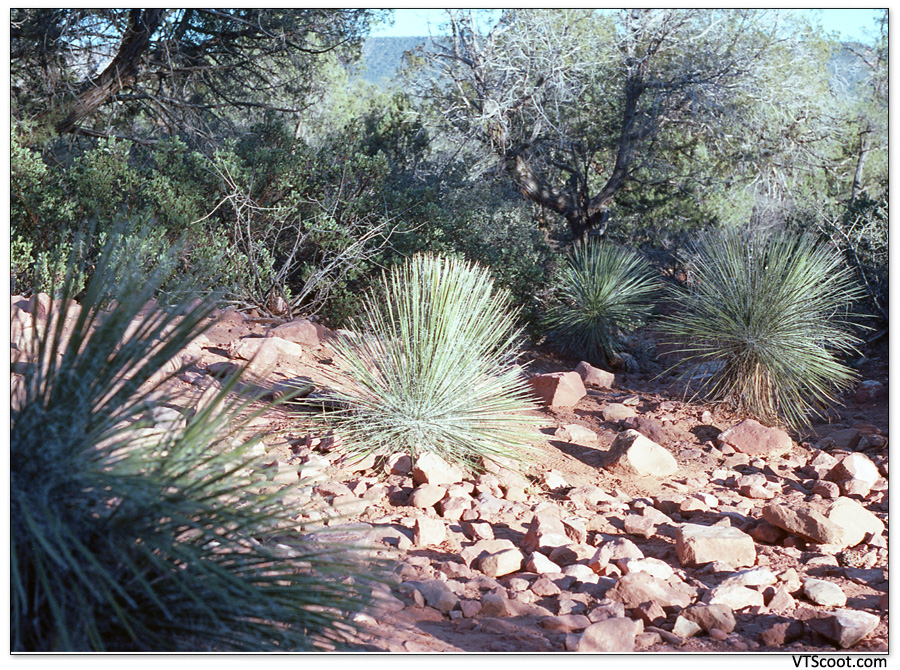Sedona on Kodak Ektar
Not all films are created equal. That’s something you learn when you get into analog photography. Each filmstock is its own tool, and there are times when you want to use a specific tool for the task at hand.
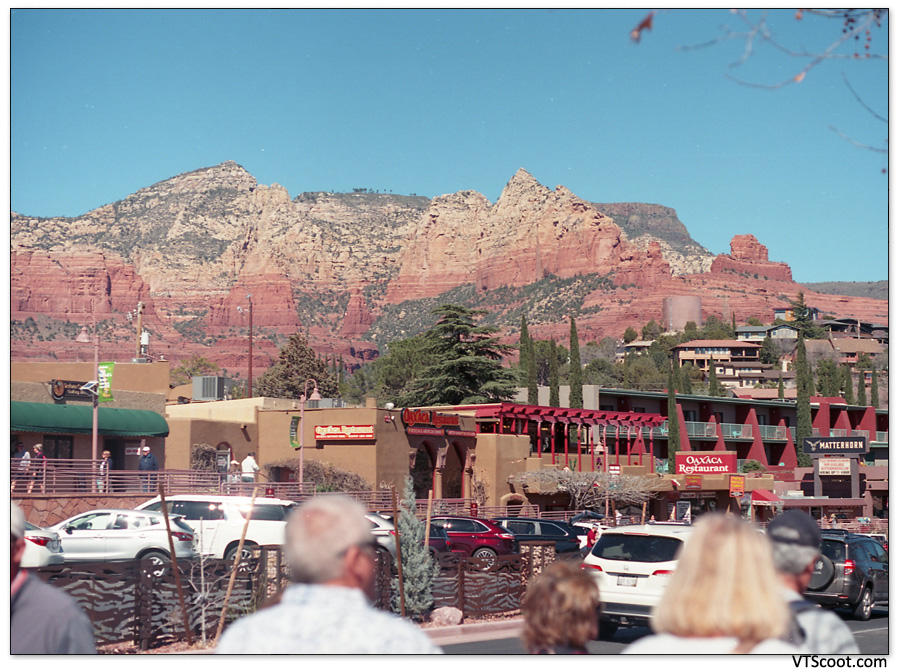
Sedona, AZ is a town that reminds me of Stowe,VT, in that it’s generally more 50% tourist at any given time, most of which seem to walk up and down one major roadway lined with overpriced shops and restaurants (I bought an 11-dollar ice cream cone). I had never been here before, and all I knew of the area is that it looked like a cowboy movie, and it was red.
The soil, the rocks, are of a certain redness unique to the area. This color is caused by the oxidation of the iron-rich sandstone that the terrain is built from. Dirt rust, if you will. Rusty rocks, rusty dirt, and it’s pretty cool.
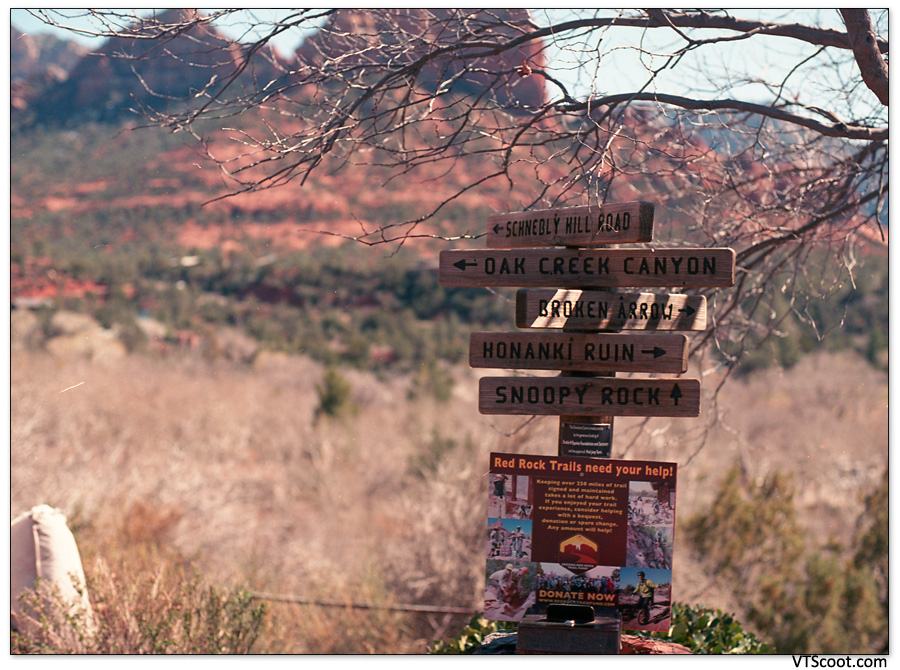
Kodak Ektar is one of my very favorite films. It’s a 100-ISO professional filmstock that used to be affordable, but now is 16-dollars a roll, so I don’t use it as profusely as I once did. What sets this filmstock aside from others is its very fine grain and heavy color saturation that makes the colors in landscapes really pop. The reds in particular. I know of no other film that produces such rich reds as Ektar does. So I dropped a few rolls of this film into my bag before setting out for a day in Sedona.
We found parking and wandered down the main street, taking photos of the town utilizing the rock formations as a backdrop. We ate ice cream, sampled some wines, I bought a “cowboy” ring from a Navajo jewelry shop (this was a priority of mine) and found a couple gifts for family. I always look for gifts when visiting a town. It was late February, so the days were still a bit shorter than normal, and so we set out for a hike in order to get the most out of the remaining daylight.
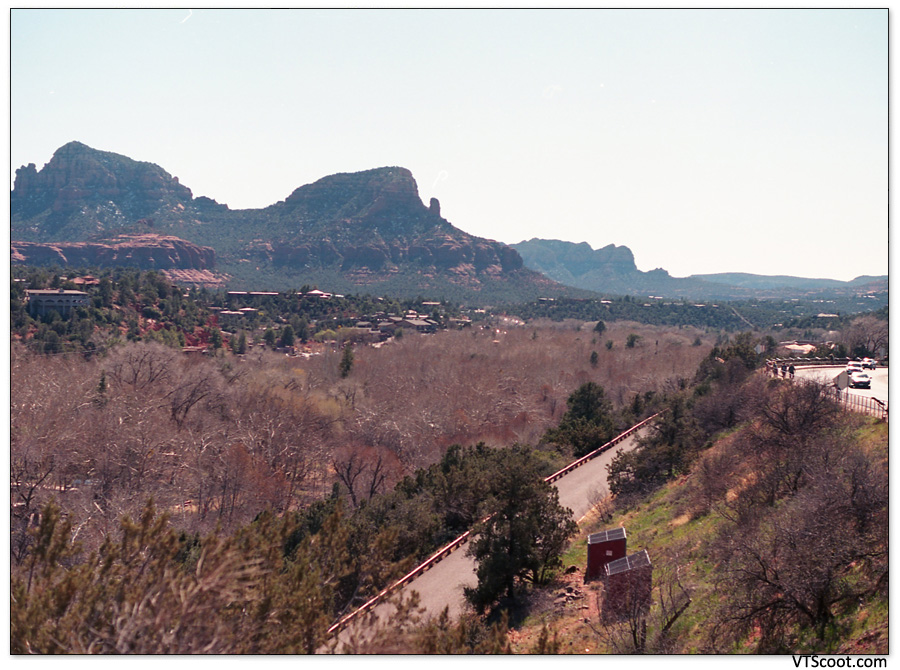
We headed for the trail that took us around Bell Rock, one of the more scenic formations in the area along with its neighboring Courthouse Butte formation. Loads of reds, and a lovely cloudless day for a hike. On the way back to the trailhead the sun started getting lower, illuminating the rock formations nicely, but leaving much of the foreground in shadow. I was shooting an Olympus built in 1975, and while I thought I was compensating adequately for the lower light in the foreground, it wasn’t enough in several if my photos.
Another drawback, and one that is native to this filmstock, is its rendering of skin tones. Simply put, skin tones are rendered a bit reddish when using Kodak Ektar (Portra would be a better film for skin rendering). If there is anything else red in the photo, the effect is even more pronounced. I wasn’t going to let this stop me from shooting pics of my partner in crime, but the end result might need a bit of editing after the fact to get the best results.

